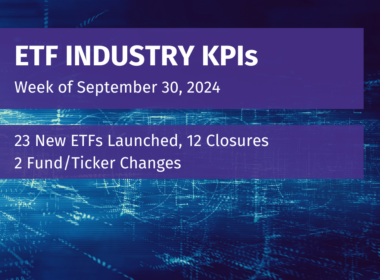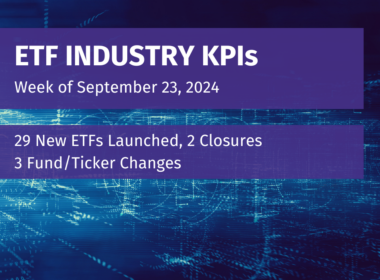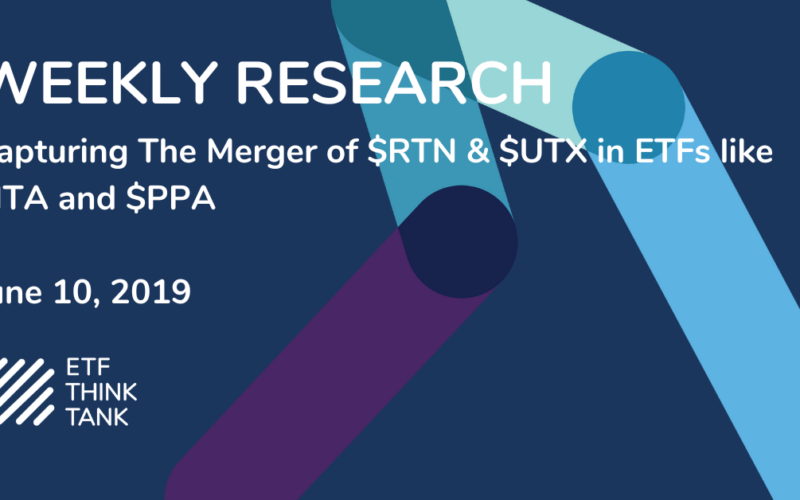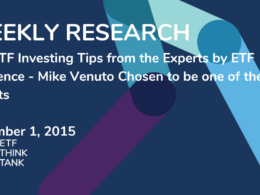|
This week, we explore outsourced portfolio construction, make a case for the IPS as a tool for transparency, and offer an IPS template we developed specifically for ETF managers. |
|
|
A Policy for GrowthWe’ve been talking a lot about transparency as one of the key factors in client alignment. In our experience, advisors who embrace transparency in their practices are likely to set policies and procedures that clearly state the value proposition of using ETF portfolios for growing client assets. With that in mind, we would like to offer a template for these guidelines, designed to help advisors build unique and intelligent ETF portfolios. The first step is to create an Investment Policy Statement (IPS).
|
Self-Driving vs. a Road Mapfor ETF PortfoliosAn IPS can be a powerful road map, allowing advisors to deliver successful ETF portfolios to clients. That said, Crystal Kim noted in Baron’s on June 1, 2019 that many advisors choose a simpler self-driving approach: As asset managers focused on ETFs for decades, we at the ETF Think Tank urge advisors to avoid this approach by asking these 4 key questions:
If you answered ‘no’ to all 4, we agree. Although we like the concept of using ETF models to streamline an advisory practice, allowing the team to focus on growth, complete outsourcing of portfolio management can be dangerous, especially when it is “free.” We believe advisors will achieve more sustainable growth with a core/satellite approach, with an internal or outsourced CIO, or simply by properly aligning with a model provider; all of which are methods that can be outlined in an IPS. Ok, So What is an IPS?Good luck searching for a definition of an ETF portfolio IPS. There appears to be very little interest in setting a format for ETF portfolios and most investors seem to rely on traditional asset allocations with the largest and cheapest ETFs. Investopedia broadly defines an IPS like this: This definition is great starting point, in that it outlines goals, objectives, risk tolerance and certain constraints. Below we extend and enhance this IPS concept and apply it to ETF portfolios: ETF IPS OUTLINE
Background, Definition of Duties & Constraints (items 1-3)The first three components of an ETF portfolio IPS provide context and establish the primary rules governing the strategy. The background is mainly there to explain why a portfolio is being created. Advisors should document the objective of the portfolios, the history and culture of the advisor and value proposition offered by the strategist. Definition of duties allows for describing the team, roles and outside resources like an OCIO or research subscription. Within this section the frequency of formal meetings should be defined. Finally, constraints, which are both acknowledgement of regulation and/or custodial firm policies like proxy voting. Additionally, this section should deem self-imposed rules like liquidity requirements or types of securities available for consideration. The purpose of the first three sections of the outline is to create parameters that allow for clear portfolio management without rehashing the fundamental concepts. This is, at its core, the structure that matters. Asset Allocation & Benchmarks (items 4-5)Although these two concepts are similar, the asset allocation and benchmarks serve very distinct roles in the ETF portfolio IPS. First, the asset allocation section should define the number of strategies or variations based on time horizon or risk tolerance. The asset allocation should also define the dynamics of the portfolio as tactical, strategic or some hybrid variation. This information can then be used to establish benchmarks. We tend to recommend two versions of a benchmark for each strategy; an internal blended benchmark that aligns with the geographic and market cap designation of the portfolio, and a straightforward external benchmark for marketing that aligns simply with the asset breakdown of bonds to equities. An example is provided below: INTERNAL MODERATE
EXTERNAL MODERATE
|
Security Selection Process
|
|
The security selection process should start with outlining a hierarchy of attributes that could initiate a purchase, like exposure, fees, sponsor or concentration. The tools in the etfthinktank.com are designed to help evaluate these types of attributes. Once a position is chosen, a benchmark should be established for each position before purchase. The benchmark for each position is the key to monitoring and triggering the sell discipline that could be performance based, trend based, or fundamental. Below we provide a hypothetical example of US-focused ETFs benchmarked to the S&P 1500. |

The Review Process (item 7)Once all the processes, benchmarks and securities are established as a portfolio, it is important to establish a formal review schedule. We recommend reviewing asset allocation and security selection at least once a month. A more formal investment committee should be established at least annually to review all the aspects of your IPS. So, I have an IPS, Now What?Advisors who have established and maintained an IPS for their ETF portfolios should be able to articulate the unique value proposition offered to investment clients. That value should be clear, offered as a fiduciary, portable and provide concise differentiation. The IPS is not an auto pilot but rather a road map defining the value and process advisors deliver to clients. Following this road map can reduce the amount of time advisors spend reviewing similar ideas, help prevent mistakes, and allow time to focus on growth. The ETF IPS can also be the basis for an advisor’s website or in other marketing collateral. The ETF Think Tank is a community of advisors growing with use of ETFs, and the ETF IPS is a road map that can assist with that growth. |
|
|
TETF.Index Performance |

|
Returns as of June 3, 2019. Inception Date: April 4, 2017. Index performance is for informational purposes only and does not represent the ETF. Indexes are unmanaged and one cannot invest directly in an index. Past performance is NOT indicative of future results, which can vary. |
|
|
TETF.Index Performance vs. Leading Financial Indexes |














